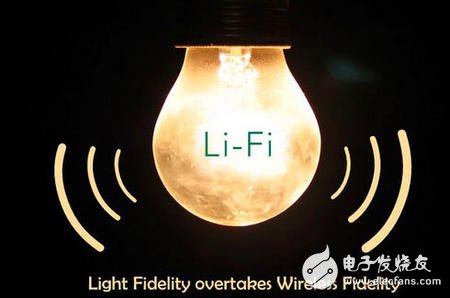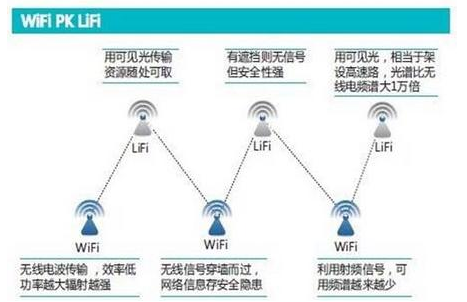
Privacy statement: Your privacy is very important to Us. Our company promises not to disclose your personal information to any external company with out your explicit permission.

A few days ago, a message swelled in major television and online media. "China's visible light communication research has made a major breakthrough; 0.2 seconds to download a high-definition movie; annual output value or over one trillion." For the breakthrough of new technology, McGrady has a strong interest, but please wait, visible light communication technology ( Still a tall noun LiFi), it seems that it is not a new vocabulary. It has been transmitted in the early years, and is this a major breakthrough a substantial breakthrough? But in fact, many netizens do not think so. Many netizens are worried about "smog blocking visible light", "whether to turn on the lights during the daytime", "whether the mobile phone needs to add a light bulb" and so on.
Visible light communication, as its name implies, wirelessly transmits signals by modulating and demodulating light. According to related reports, it is mainly to use the light of semiconductor lighting (LED lights) to achieve a new high-speed data transmission technology that "can shine online." The visible light communication technology is green and low-carbon, can realize near-zero energy consumption communication, and can effectively avoid the weakness of radio communication electromagnetic signal leakage, and quickly construct a safety information space for anti-interference and anti-interception.

In many media reports, I quoted Jiang Jiangxing, a well-known expert in the field of information in China and a member of the Chinese Academy of Engineering. At present, there are about 44 billion lamps and lanterns in the world, and the integration of tens of billions of LED lighting equipment and other equipment will build a huge Visible light communication network. It is conceivable that after the realization of large-scale visible light communication in the future, each lamp can be used as a high-speed network hotspot. When people wait for the car, they can download several movies under the street light. On the plane and high-speed rail, they can also use the LED light source to wirelessly access the high-speed Internet. To meet the network end wireless communication requirements of indoor network, Internet of Things, Internet of Vehicles, Industry 4.0, secure payment, smart city, defense communication, weaponry, electromagnetic sensitive area, etc., to provide a new and cheap access method for Internet+.
At the same time, Qi Jiangxing also predicted that in the next few decades, the transmission of information will exceed the carrying capacity of the existing radio spectrum. The visible light communication technology can effectively break through the serious shortage of radio spectrum resources, and is the next generation wireless communication with broad application prospects. One of the technologies can form a strategic emerging industry with a trillion-year output value.
The breakthrough is mainly around the download rate, but the communication business needs to solve more
Well, after reading the experts' exciting predictions for the future, let's take a look at the description of this substantial breakthrough. According to media reports, this technological breakthrough is tested and certified by the Ministry of Industry and Information Technology. The key technology research of the system has recently achieved a major breakthrough, and the real-time communication rate is increased to 50 Gbps (bits per second), which is equivalent to 0.2 seconds to complete the download of a high-definition movie.
Looked out, the breakthrough is mainly in the download rate. In addition, there seems to be no good explanation for other aspects. It is no wonder that it will attract netizens to make bricks.
According to the introduction, high-speed transmission has always been one of the focus topics in the field of visible light communication. The research and development team of the People's Liberation Army Information Engineering University Yu Hongyi adopts a synergistic processing method of optics and electricity, breaking through the key technologies such as high-efficiency suppression of mutual interference in visible space channels, and entering integration. Miniaturization design and implementation phase. This university is a research institute engaged in the research and development of visible light communication technology earlier in China. In 2013, it took the lead in undertaking the first visible light 863 project in China and established the “China Visible Light Communication Industry Technology Alliance”. After more than three years of scientific and technological research, it has successfully developed application demonstration systems such as “visible light on demand TV service”, “visible light wireless broadcast” and “visible light precise positioning”.
Can't visible light communication work? Netizens shoot bricks
This technology can't work. I didn't really see the demo demo. McGrady didn't dare to express his opinions easily, but the netizens' pats were quite sharp, and they could be divided into the following aspects:
Interference problem: Some netizens will give a professional opinion on the interference problem. The ambient light source will sometimes work in the same spectral frequency band. At this time, if the ambient light source is relatively strong, it is very likely that LiFi will not communicate normally. The main reason is because the letter/ The noise ratio (SINR) is too bad. Visible light communication is full of interference everywhere. Will strong light and light pollution become a major interference in visible light communication? Such as car headlights, billboards, and even lightning.
Transmission range problem: Some netizens said that light belongs to high-frequency electromagnetic waves, and the higher the frequency, the faster the attenuation. The current WiFi generally works under 2.4G and 5G, and is generally 30m~100m. It is conceivable that optical communication can generally be spread in a room. The transmission range must be limited, for example, only standing under the street light?
Modulation and demodulation and uploading problems: There are more professional netizens who know the netizens 'mad men', who question the high-frequency modem and commercialization: the cost of producing such high-frequency modem products should not be low. All reports and technical materials are almost always talking about the download rate problem, how to modulate and transmit the signal of the illumination source, and how to increase the sensitivity of the terminal receiver to diffuse reflection signals under ambient light. But it is rare to see how to achieve uplink backhaul. Is it necessary to install a (normally lit) light bulb for each mobile phone and computer?

In addition, some netizens have questioned the competition of similar technologies and standardization issues. After all, wireless technologies such as WiFi are very mature. Do we need another technology to compete? I hope that relevant experts will have the opportunity to come out and dispel the doubts for everyone, so as not to worry about professional issues such as "smog blocking visible light", "whether to open the light during the daytime" or "whether the mobile phone needs to add a light bulb".
Wyślij je do tym dostawcy

Privacy statement: Your privacy is very important to Us. Our company promises not to disclose your personal information to any external company with out your explicit permission.

Fill in more information so that we can get in touch with you faster
Privacy statement: Your privacy is very important to Us. Our company promises not to disclose your personal information to any external company with out your explicit permission.